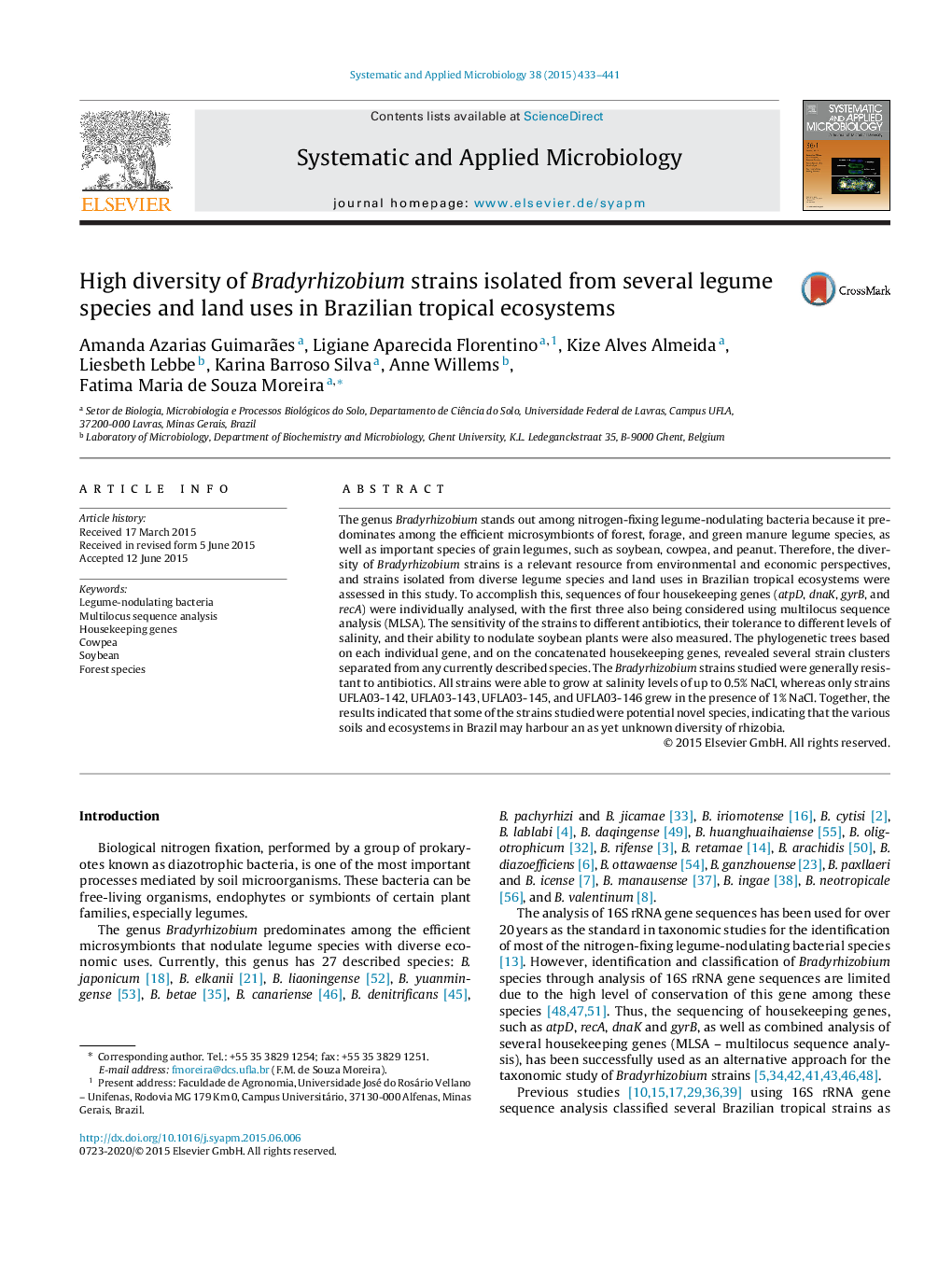| Article ID | Journal | Published Year | Pages | File Type |
|---|---|---|---|---|
| 2062924 | Systematic and Applied Microbiology | 2015 | 9 Pages |
The genus Bradyrhizobium stands out among nitrogen-fixing legume-nodulating bacteria because it predominates among the efficient microsymbionts of forest, forage, and green manure legume species, as well as important species of grain legumes, such as soybean, cowpea, and peanut. Therefore, the diversity of Bradyrhizobium strains is a relevant resource from environmental and economic perspectives, and strains isolated from diverse legume species and land uses in Brazilian tropical ecosystems were assessed in this study. To accomplish this, sequences of four housekeeping genes (atpD, dnaK, gyrB, and recA) were individually analysed, with the first three also being considered using multilocus sequence analysis (MLSA). The sensitivity of the strains to different antibiotics, their tolerance to different levels of salinity, and their ability to nodulate soybean plants were also measured. The phylogenetic trees based on each individual gene, and on the concatenated housekeeping genes, revealed several strain clusters separated from any currently described species. The Bradyrhizobium strains studied were generally resistant to antibiotics. All strains were able to grow at salinity levels of up to 0.5% NaCl, whereas only strains UFLA03-142, UFLA03-143, UFLA03-145, and UFLA03-146 grew in the presence of 1% NaCl. Together, the results indicated that some of the strains studied were potential novel species, indicating that the various soils and ecosystems in Brazil may harbour an as yet unknown diversity of rhizobia.
